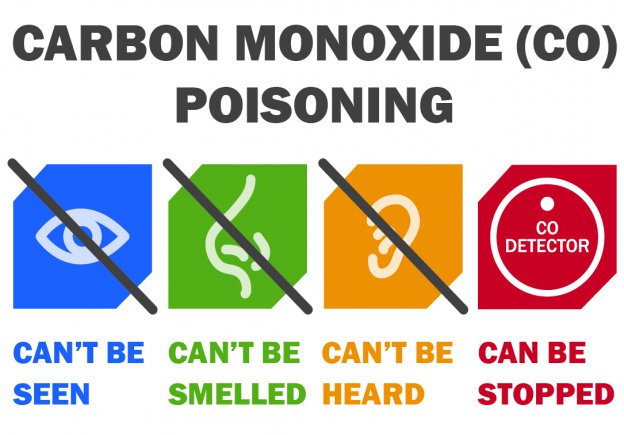CO is a connection between carbon and oxygen. The gas is produced by incomplete combustion of fossil fuels and is toxic, colorless and odorless and therefore very dangerous. The gas is marginally lighter than air.
 With natural gas, butane, propane and heating oil are normally blue flames. Yellow flames indicate poor combustion.
With natural gas, butane, propane and heating oil are normally blue flames. Yellow flames indicate poor combustion.
There is more risk in poorly ventilated areas, poorly maintained chimneys, stoves and water heaters. Calm, foggy weather can affected the draw in the chimneys negatively. This could cause a backlash from combustion gases.
In the blood CO binds to the oxygen transporting protein hemoglobin in red blood cells where it displaces the oxygen (O2). CO binds about 240 times better than oxygen. Thus, even with a low concentration of CO in the air there can be a relatively large amount of CO in the blood and follow symptoms of poisoning.
The symptoms of carbon monoxide poisoning are headache, nausea, dizziness and fatigue. With longer exposure unconsciousness and finally death from lack of oxygen in the brains follows. The symptoms are often not recognized because people and animals unnoticed fall asleep and die. Victims of carbon monoxide poisoning have a striking red blush on the face.
Ensure good ventilation and exhaust fumes. A carbon monoxide detector is not expensive and alerts timely. (A canary that drops from his stick too.)
Treatment: bring yourself not in danger: not rashly enter this area. Open windows and doors to ventilate. Do not make sparks because of explosion hazard. Remove the victim to fresh air. Check consciousness, breathing and heart function. CPR if necessary. (Call 112, give oxygen.)
For more info about other situations such as epilepsy, hyperventilation, heart attack, electrocution... follow a course.
